Cockroaches are more than just gross insects. The presence of cockroaches can be accompanied by health concerns as they are known to carry a variety of pathogens that can cause such diseases and illnesses such as dysentery, diarrhea, cholera and typhoid fever. More commonly, cockroaches also produce an allergen that has been known to trigger asthma attacks, particularly in children. More than 14 million American homes report having dealt with cockroaches.
Getting rid of these insects for good can be challenging. However, one of the first steps to taking care of a cockroach problem in your home is to learn about these pests and how to combat them.
Understanding Cockroaches
Cockroaches are an ancient group of insects that appeared about 300 million years ago. While over 4,600 different species exist, only about 30 of them are sometimes found in homes and other buildings. While cockroaches can have a bad reputation, roughly only one percent of cockroaches are deemed pests. These insects are survivors. They can go for days without food or water and up to 45 minutes without air.
What Do Cockroaches Look Like?
The body of a cockroach is flat, oval-shaped and oily to the touch. Species vary in size with the largest one reaching six inches. The most common types of cockroaches are the American cockroach, the German cockroach, brown-banded cockroach and Oriental cockroach.
Do Cockroaches Bite?
Cockroaches can bite humans, but it's an extremely rare occurrence. The only reason a cockroach might bite a person is a long-term lack of nutrition. In American homes, cockroaches always find sufficient food without having to resort to biting.
Cockroach Behavior
Cockroach behavior can vary depending on the type of cockroach at-hand. On the whole, however, these insects are nocturnal. They rest during the day and look for food or move about during the evening. The activity of cockroaches peaks about three hours before sunset. Cockroaches are great navigators. They learn where the food is in the nearby environment and design a path system to look for it.
The lifecycle of a roach has three stages: egg, nymph and adult. The lifespan varies from species to species but usually lasts between 6 and 15 months.
These pests are very social. They live in families that usually consist of an equal number of males and females. Studies show cockroaches that live outside of a community or family can develop an isolation syndrome.
Where do cockroaches live?
Cockroaches prefer to live close to a reliable water source, such as faucets in a kitchen or bathroom. They are attracted to water and look for moist, humid and dark spaces. In a house or apartment, you can find a cockroach in:
- Furniture
- Cupboards
- Drains
- Appliances
- Boxes
- Books
- Ceilings
- Cellars
- Cracks in walls
Since cockroaches are nocturnal, they try to hide during the day. Once sources of light disappear, they come out of their hiding places.
Outside of the house, they can live in:
- Tree trunks
- Shrubbery
- Sewers
- Drain pipes
- Garbage cans
Unlike many other types of insects, cockroaches don't build nests. They simply find a dark and humid place and live there with their families.
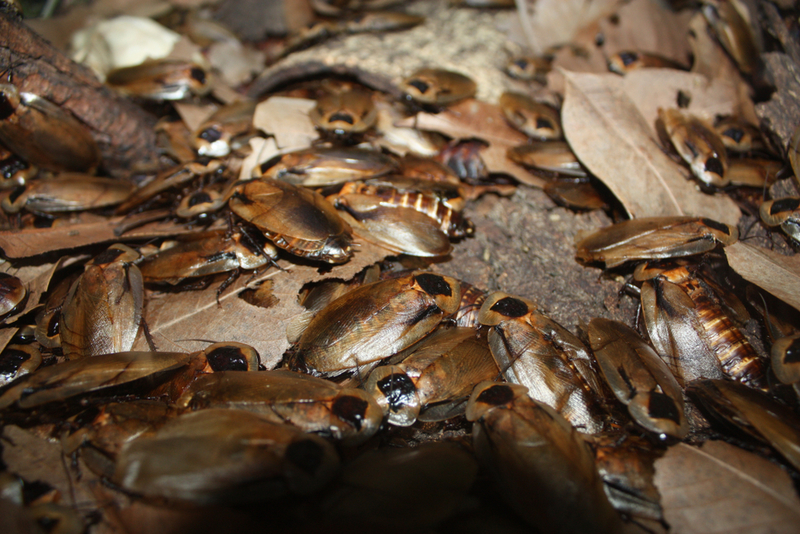
What different types of cockroaches live in the U.S.?
While there are thousands of different species of cockroaches, these are the most common types of cockroaches that can be found in homes throughout the U.S.
American Cockroach
American cockroaches are usually 1.4 to 1.6 inches long. Some grow to exceed two inches. These cockroaches are reddish-brown with a yellow band on the back of their heads. These pests have wings that can carry them over a short distance.
Female American cockroaches produce over 300 nymphs over their lifetime. Their reproduction depends on the conditions they live in. Females live longer than males do. Some can live up to two years.
American cockroaches prefer moist and humid environments. Despite the name, these roaches exist all over the world.
American cockroaches are omnivores. They prefer items like fermenting fruit but can also eat sweets and starch; they have even been known to eat cosmetic items.
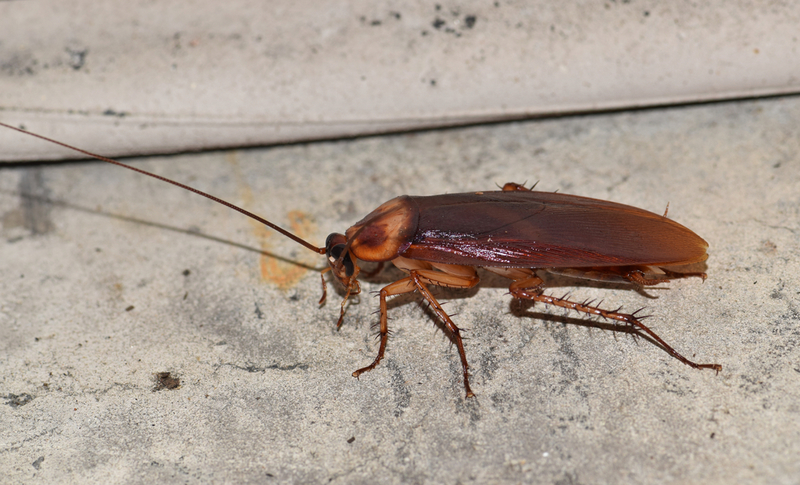
Brown-banded cockroaches
Brown-banded cockroaches are usually reddish-brown to dark brown in color. Both males and females of the species have two yellow bands across their bodies. They have wings, but only males can use them for short-distance flying. Their lifespan is about 11 months.
Compared to their American cockroach relatives, these roaches are small. The largest males are only about half an inch in size. Throughout its lifetime, a female brown-banded cockroach can produce about 250 nymphs. While mostly nocturnal, these roaches sometimes move around during the day.
Brown-banded cockroaches prefer warm temperatures around 77 °F to 91 °F. They eat almost anything that has an organic component.
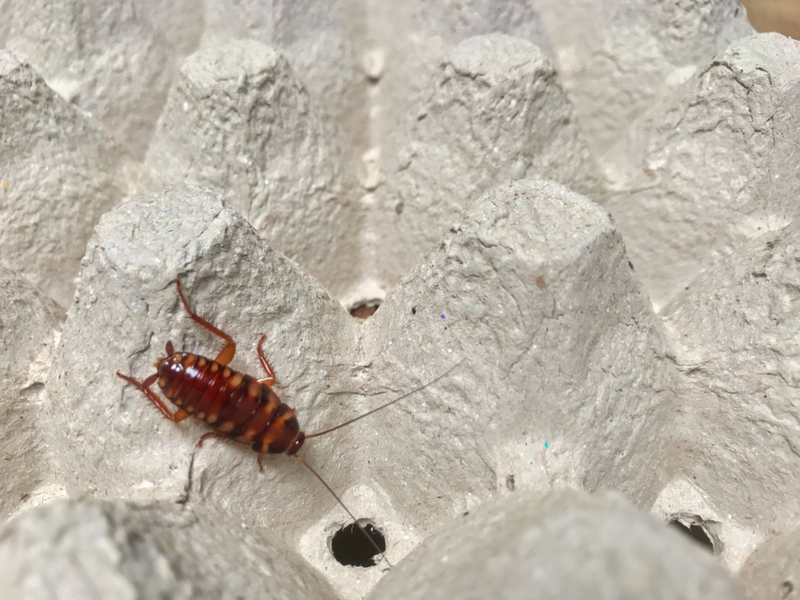
German cockroaches
German cockroaches are one of the most common species of cockroach in the world. They are usually about half an inch long. Their bodies are pale brown with two dark brown stripes behind their heads. These cockroaches are incredibly prolific. A female German cockroach can produce up to 10,000 nymphs per year under ideal conditions.
These roaches can live for as long as a full year and eat almost anything that's remotely organic, including leather and bodily fluids.German roaches have wings, but cannot fly. Some can run as fast as three miles per hour. These pests love warm and humid places like kitchens and bathrooms.
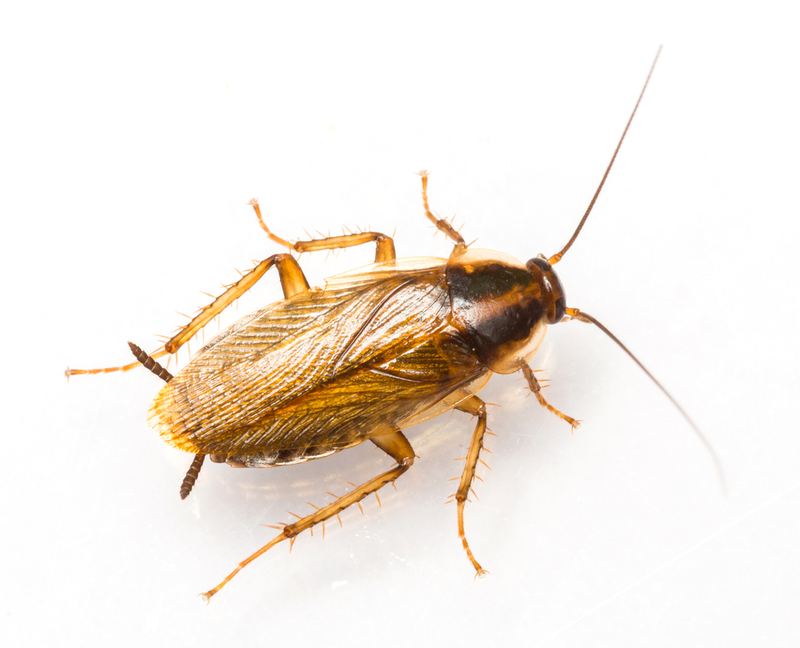
Oriental cockroaches
Oriental cockroaches are about one inch long in length, with the females of this species slightly longer than the males. These pests usually live up to six months. Their favorite source of food is decaying organic matter.
These insects have dark brown or black bodies. While Oriental cockroaches have wings, neither males nor females can fly. Throughout their lifetime, Oriental cockroaches produce up to 600 nymphs.
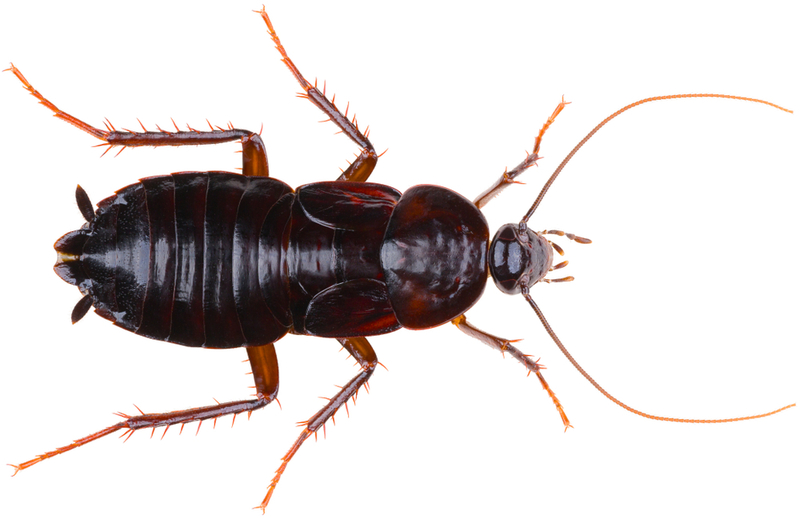
Signs of a cockroach infestation
Since cockroaches love to hide and come out at night, you may not always see them. However, you can often notice the following signs of a cockroach infestation:
- Cockroach droppings (cylindrically shaped, black, about 2 mm in size)
- Smear marks (brown and irregularly shaped)
- Shed skin
- Unusual smell
As soon as you notice these signs, it's important to act fast to stamp out an infestation. Roaches reproduce quickly and can pose a danger to your health.
What damage can cockroaches cause?
Since cockroaches eat just about anything, they can damage wallpaper, letters, drapes, clothing and furniture. While the damage may seem minimal at first, a sizable cockroach infestation can cause visible problems. Cockroaches can also contaminate many food products due to their activity.
Beyond damage to your home and property, cockroaches have been known to carry bacteria that, if they come in contact with your food, can lead to salmonella, streptococcus and staphylococcus.
How Terminix treats for cockroaches in your home
Eliminating cockroaches is a serious challenge. While many homeowners try home remedies like traps or DIY repellents, insects tend to ignore them and come back for more.
At Terminix, we take a comprehensive approach to exterminating cockroaches that involves a variety of professional methods.
Contact Terminix today for a free quote and take the first steps towards controlling your cockroach problem.


